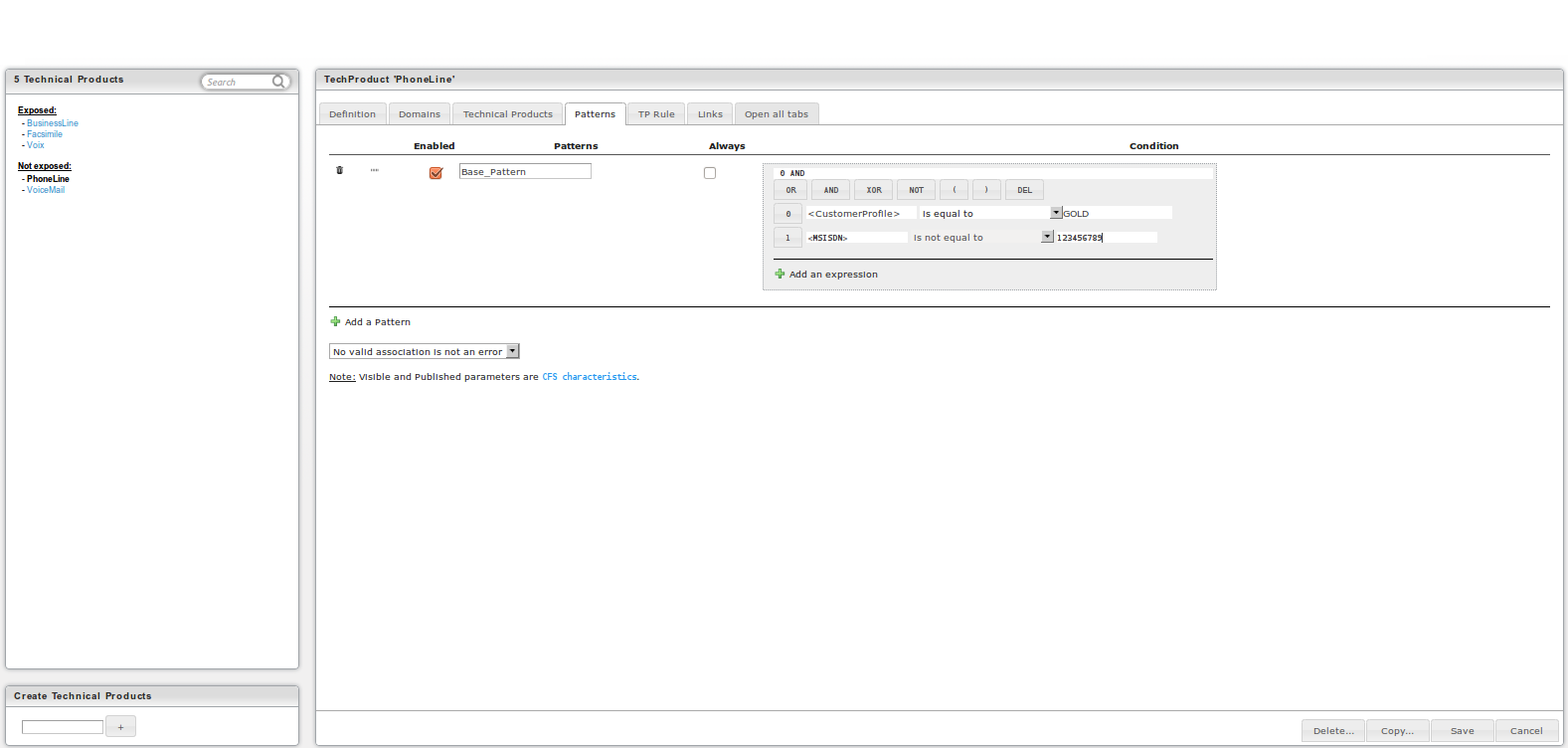Complex Conditions
Expanding the conditions panel by clicking the triangle button lets you define complex conditions as shown in the following figure. Define the individual simple conditions, then use the buttons to build a complex condition out of them.
Conditions are evaluated from left to right and in case of OR operator, it stops at first "true" operand.
When a name is not found in a dataset, Fulfillment Provisioning Catalog considers this an error and stops processing conditions considered false.
Example 1: If condition is "a=1 or b=1"
-
in dataset we have a=1 and b=0, result is true
-
in dataset we have a=1 and b=1, result is true
-
in dataset we have a=1 and b not in dataset, result is true
-
in dataset we have a=0 and b=0, result is false
-
in dataset we have a=0 and b=1, result is true
-
in dataset we have a=0 and b not in dataset, result is false
Example 2: If condition is "b=1 or a=1"
-
in dataset we have a=1 and b=0, result is true
-
in dataset we have a=1 and b=1, result is true
-
in dataset we have a=1 and b not in dataset, result is false
-
in dataset we have a=0 and b=0, result is false
-
in dataset we have a=0 and b=1, result is true
-
in dataset we have a=0 and b not in dataset, result is false

